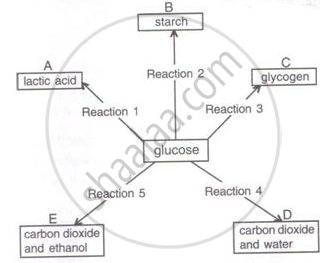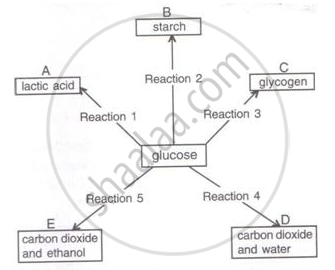Advertisements
Advertisements
प्रश्न
Do the plants respire all day and night or only during the night?
Do the plants respire all day and night or only during the night? Give reasons.
उत्तर
Plants respire all day and night because their cells need a steady source of energy for all the different processes that happen inside them. Plants need energy to grow, for root cells to get into the ground and take in water and minerals, and for many other things. Therefore, plants are always breathing, day and night.
संबंधित प्रश्न
Differentiate between aerobic respiration and fermentation.
Plants carry out photosynthesis only during the day and respiration only at night.
State if the following statement is true or false. Correct the statement if it is false.
Anaerobic respiration takes place in our bones.
Mention if the following statement is true or false. If false, rewrite them correctly.
Aerobic respiration of one mole of glucose yields 138 ATP.
Differentiate between the following pairs on the basis of the aspect given in the brackets.
Aerobic and Anaerobic respiration (End products of the process)
Given below are chemical reactions (1 to 5) involving glucose and five other chemical products (A-E).

Write the reaction number of the following:
(i) Anaerobic respiration in plants __________
(ii) End products in aerobic respiration ____________
(iii) Reaction occurring in liver _________
(iv) Anaerobic respiration in animals ________
(v) Storage in the liver _________
Given below are chemical reactions (1 to 5) involving glucose and five other chemical products (A-E).

Which reactions (1-5) in the above correspond to the following (write the corresponding number of reaction next to them).
(i) Aerobic respiration
(ii) Change taking place in the liver
(iii) Anaerobic respiration in yeast
(iv) Change taking place in a plant
storage organ, e.g., potato
(v) Anaerobic respiration in animals
What is alcoholic fermentation?
Name the cell organelle in which Kreb's take place.
Complete the following statement by selecting the correct alternative from the ones given below:
The immediate source of energy for metabolic reactions in a living cell is ______.
Answer the following question.
How are glycolysis, TCA cycle, and electron transport chain-linked? Explain.
Answer the following question.
Explain ETS.
What is the net gain of ATP molecules during aerobic breakdown of one glucose molecule?
First ______ constitute the preparatory phase through which glucose is phosphorylated twice at the cost of ______ molecules.
Which of the following is the first chemical step in respiration?
Identify the reasons due to which less energy is produced during anaerobic respiration than in aerobic respiration.
- Incomplete breakdown of the respiratory substrate.
- NADH2 does not produce ATP, as electron transport is absent.
- Glycolysis does not occur during anaerobic respiration.
Identify the INCORRECT statement.
During which of the following process oxidative phosphorylation occurs in eukaryotes?
Fumaric acid is converted into malic acid by a process called ____________.
How many ATP molecules are produced by oxjdation of one molecule of acetyl-Co-A?
Diffusion of gases takes place from ______.
____________ results into the conversion of oxalosuccinate into α ketoglutarate involves in Krebs cycle.
In which of the following, do the two names refer to one and the same thing?
Identify the number of 3 carbon compounds formed during glycolysis.
How many ATPs will be effectively produced during the production of 1 molecule of acetyl Co-A from 1 molecule of pyruvic acid?
Mark the following statement as True or False. Correct the false statement.
Oxygen breaks down glucose outside the cells of organisms.
Pyruvic acid, the key product of glycolysis can have many metabolic fates. Under aerobic condition it forms ______.
Sequence of cytochromes in respiratory chain is ______.
A sportsman, after a long break from his routine exercise, suffered muscular cramps during a heavy exercise session. This happened due to ______.
